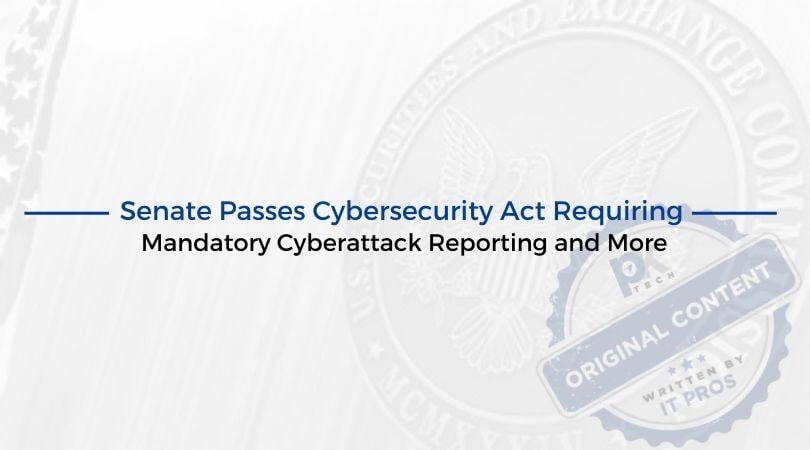Senate Passes Cybersecurity Act Requiring Mandatory Cyberattack Reporting and More
Last Tuesday, the Senate passed new cybersecurity legislation regarding reporting of cyberattacks to the Cybersecurity Infrastructure Security Agency...
4 min read
PK Tech November 19, 2024

With the world evolving at every turn, one institution seems left in the dust: the Internal Revenue Service. The IRS is notorious for not addressing its aging technology infrastructure–slow processing, long wait times, and archaic processes.
Why should you care? The IRS’ shortcomings are hurting taxpayers and putting them at risk.
When we talk about “aging tech infrastructure,” we’re referring to the outdated systems, networks, and hardware that underpin essential public services. This can include everything from old servers and operating systems to obsolete software and inefficient communication networks used by local governments, schools, healthcare facilities, and other public entities.
Much of this infrastructure was built decades ago, and while it may have been cutting-edge at the time, it’s now increasingly vulnerable to failures, security breaches, and inefficiencies. But instead of upgrading these systems to keep up with today’s demands, many government agencies have been forced to patch up these older systems, creating a situation where the costs continue to rise, and the risks continue to grow.
The IRS has been around for a long time–and so have its tech systems. Here are the highlights (or shall we say “low” lights of the current IRS infrastructure:
At the heart of the problem lies the cost of maintaining these outdated systems. Beyond just the IRS, governments often spend vast sums of taxpayer money simply to keep old systems running. Here's why:
The dangers of relying on aging government tech aren’t just financial—they also put the safety and security of citizens at risk.
Given the clear risks and costs associated with aging government tech infrastructure, it begs the question: why isn’t more being done to address this issue? The answer is multifaceted:
Upgrading public sector tech infrastructure should be a top priority for governments at all levels, specifically at the IRS. Here’s what the focus should be on:
The need for modernization is urgent—not just for the IRS but for many government agencies. Taxpayer security, public safety, and much more are on the line.
If your business is ready to do its part–reach out to us. We make IT simple–because your business and reputation depend on it.

Last Tuesday, the Senate passed new cybersecurity legislation regarding reporting of cyberattacks to the Cybersecurity Infrastructure Security Agency...

There are so many complex aspects of cybersecurity. For many companies, the best starting point is addressing the most common vulnerable entry point...